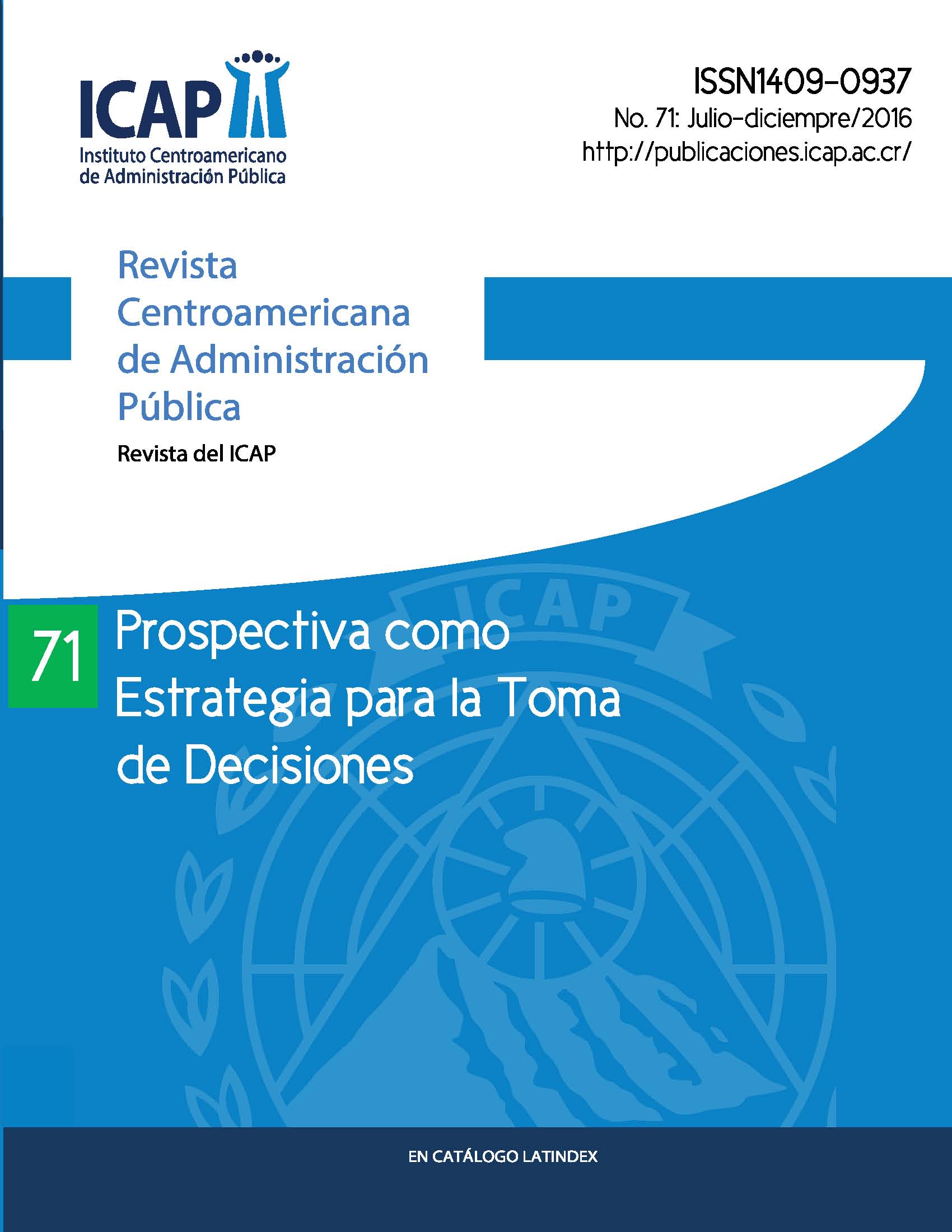No. 71 (2016): Prospective as a Strategy for Decision Making

We live in an era in which the constant is change, which happens at a speed and intensity never seen before. This means that decision making processes are affected by volatile political, economic, social and environmental conditions, and therefore it is no longer possible to continue planning and making decisions based on the now, but rather it is essential to think about tomorrow. Undoubtedly, today more than ever we need a medium and long-term vision that allows us to foresee problems and act before they worsen and become uncontrollable.
This is why a tool such as foresight becomes a valuable ally for decision making in all areas, but certainly in the public sphere it is of great value. In the region, knowledge about the mega-trends that are shaping the world of the future is scarce; even less is there recognition of the impact that this will have on regional integration processes; somehow it is still thought that the national and regional agenda is an endogenous process, that is to say that the region is a kind of closed system.
For the future of Central American integration, strategic foresight is central, as it would help to move towards convergence, strengthening common positions that reflect regional priorities vis-à-vis the world and other blocs. This requires knowing and analyzing the macro-trends of the future and reflecting on the possible effects for the region. Likewise, having a tool such as foresight would help enormously in strategic planning as it would make it possible to visualize the benefits of collective action on issues such as infrastructure, energy, migration policies, mitigation and adaptation to climate change, the fight against organized crime and, of course, post-2015 development commitments, linked to the Sustainable Development Goals (SDGs).
Foresight offers strategic planning the possibility of conceiving future alternatives and understanding the major transformations that will occur in the future.
alternatives for the future and to understand the major transformations of society, thus anticipating the inertia of classic governmental action, which is generally repetitive and routine, and this generally leads to a high degree of citizen dissatisfaction, a worrying aspect insofar as all public policy has as its maximum objective the satisfaction of the citizen's needs.
needs of the citizen.
Specifically, foresight applied to public management becomes a highly valuable tool due to its cognitive nature, since it generates the possibility of constructing scenarios and therefore visions of the future. It also favors strategic planning, since it favors medium and long-term decision-making processes and, depending on the method applied, it is a tool for citizen participation that legitimizes decision-making processes.
Thus, the Central American Journal of Public Administration number 71 is structured as follows. The first section presents an editorial on the importance of strategic foresight for decision making, followed by articles that address the subject of foresight from the conceptualization, methodological approach and practical cases. This is followed by the section on documents, which deals with various topics on Public Administration and Management. Finally, bibliographical references and the authors' guidelines are presented.










